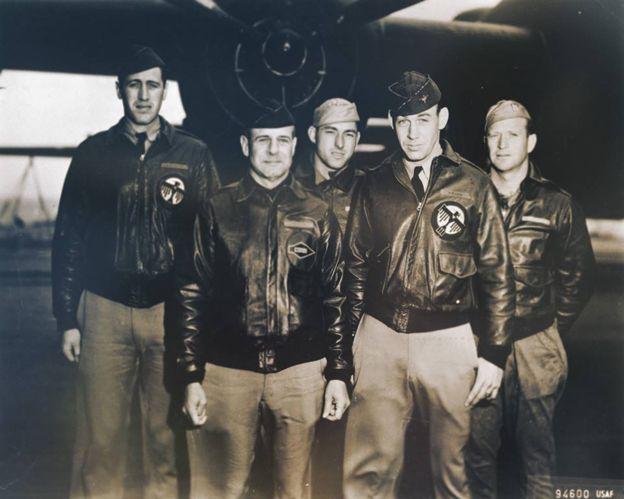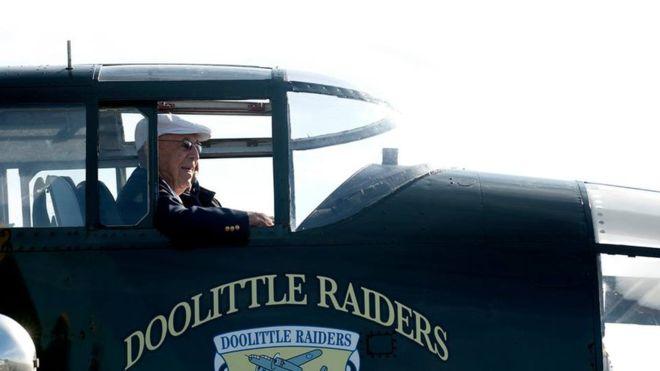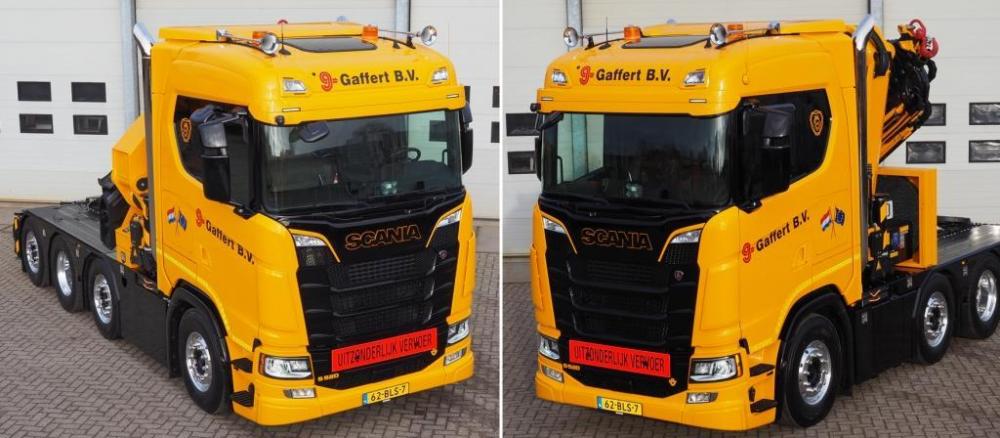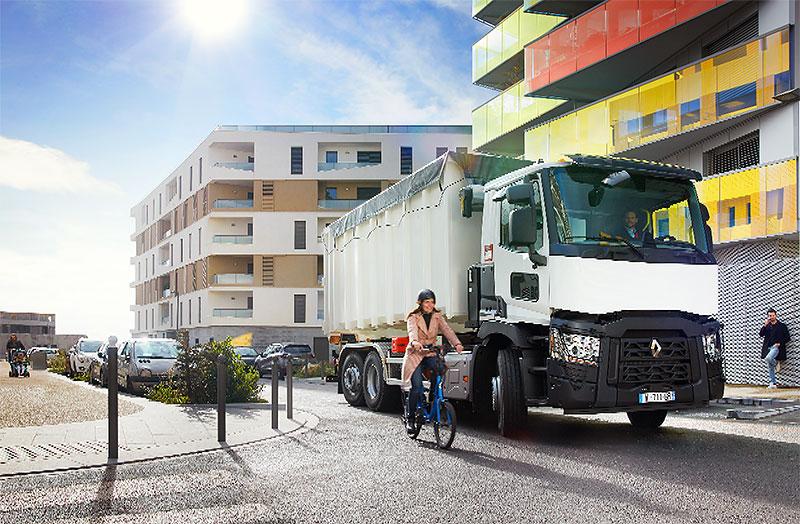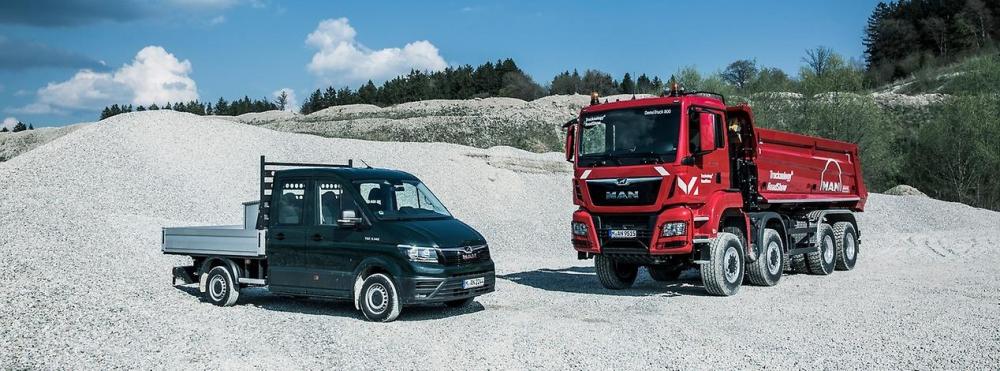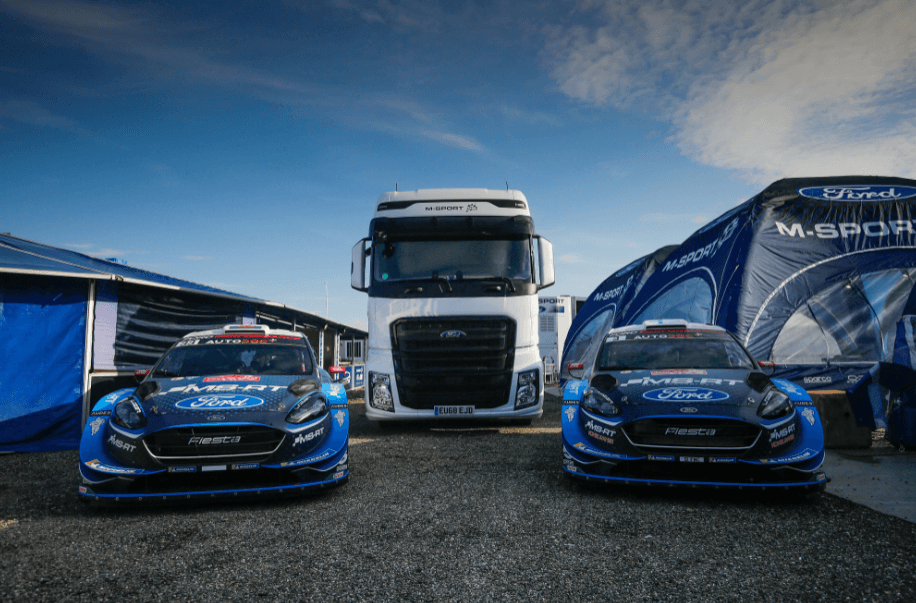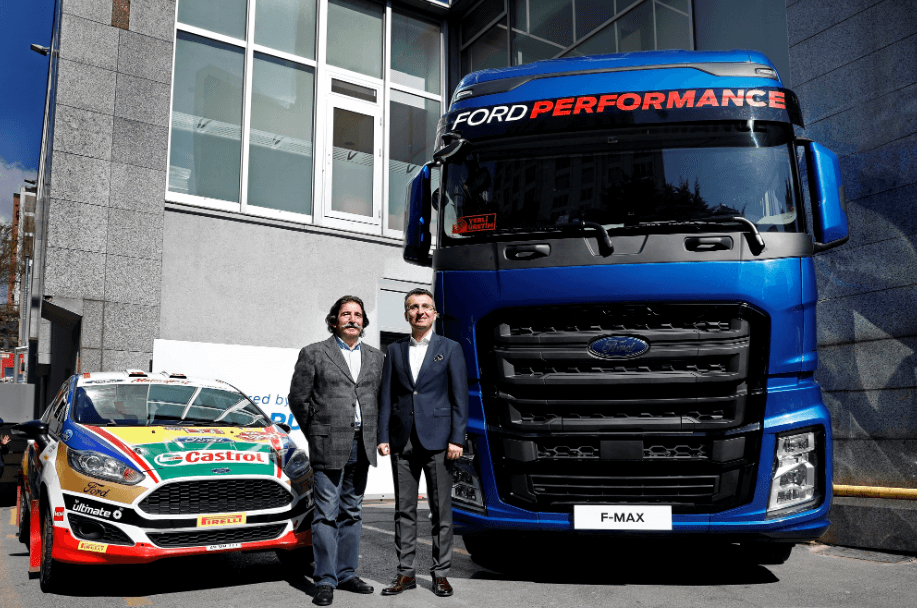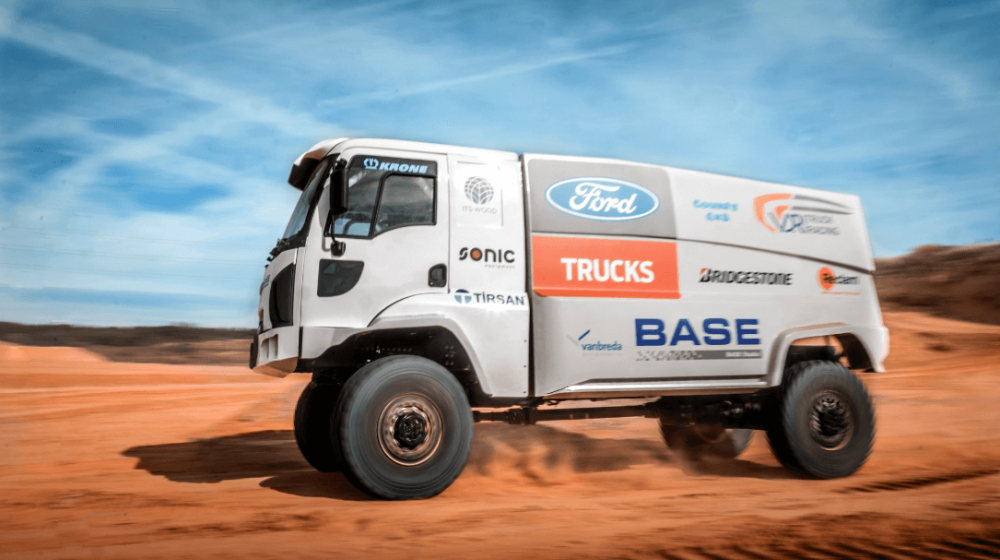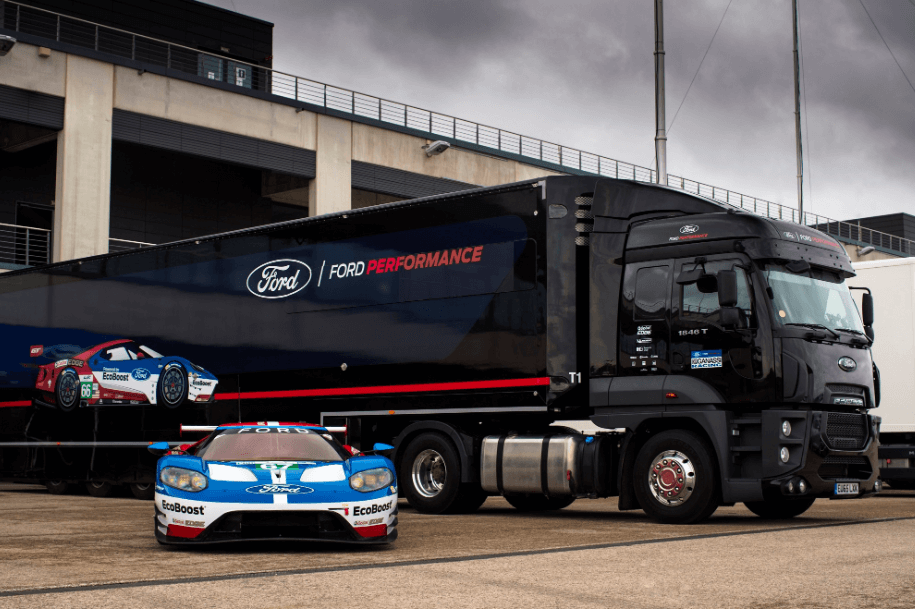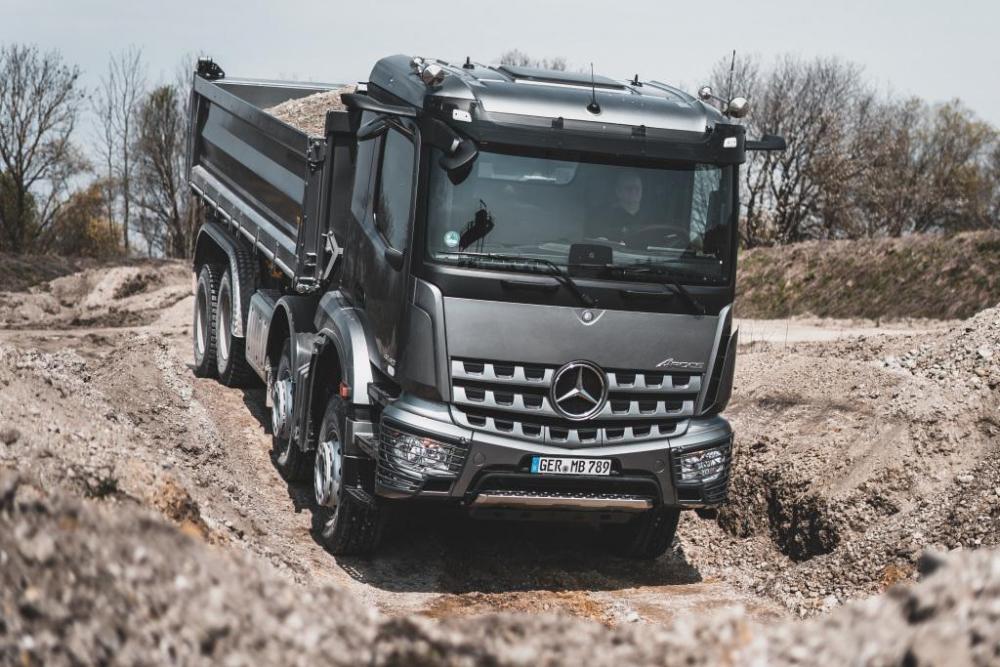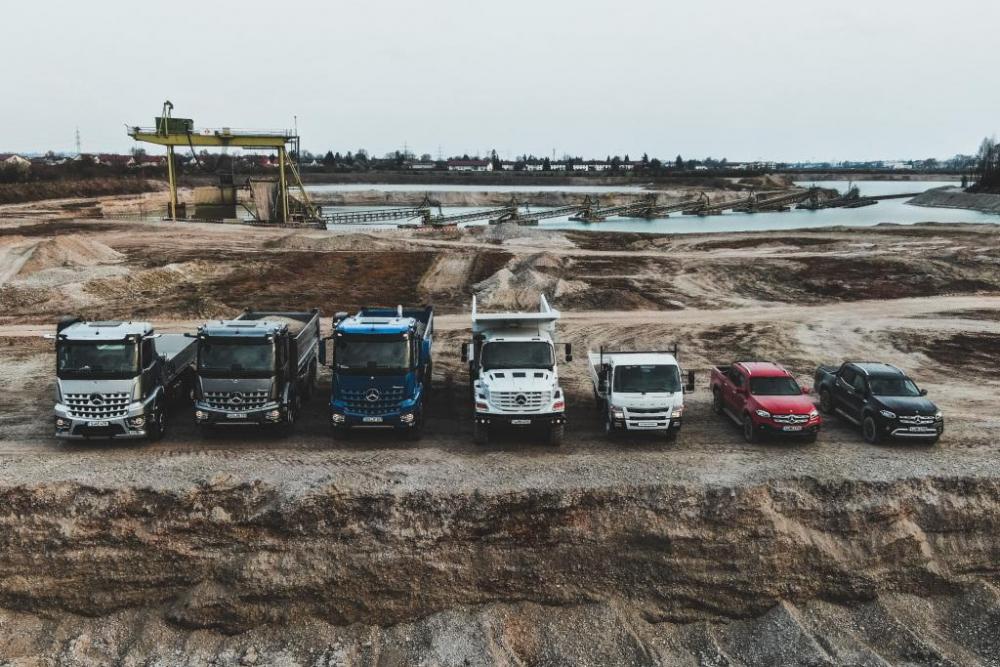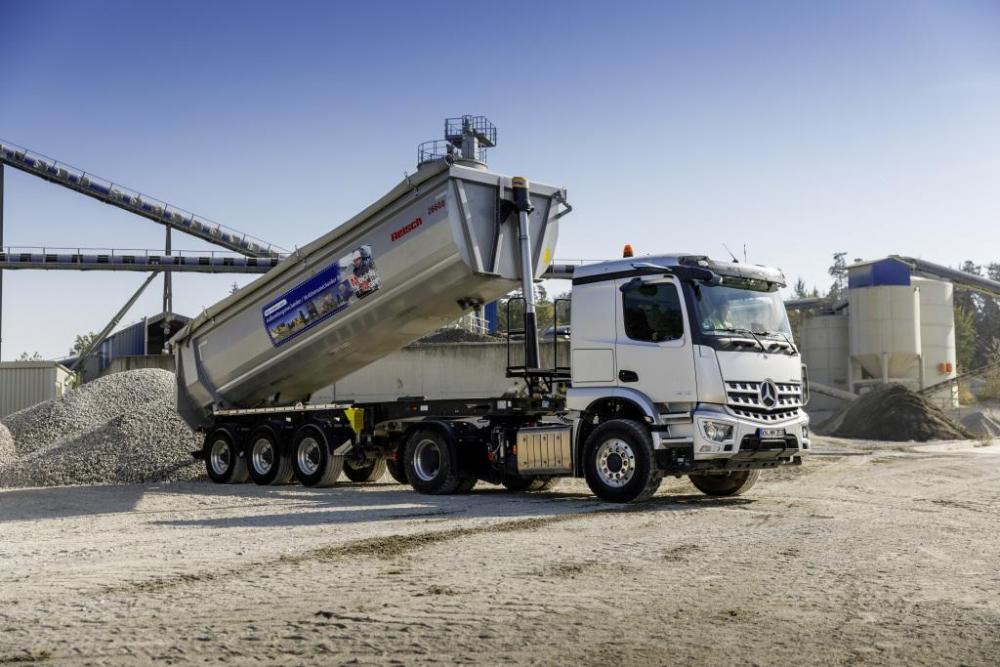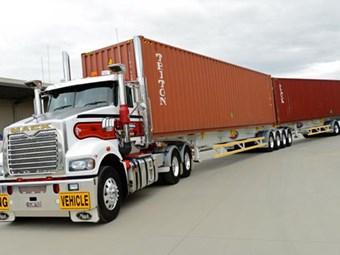
kscarbel2
Moderator-
Posts
18,886 -
Joined
-
Days Won
114
Content Type
Profiles
Forums
Gallery
Events
Blogs
BMT Wiki
Collections
Store
Everything posted by kscarbel2
-
Ford recalls F-150, Super Duty trucks a second time for fire risk Greg Layson, Automotive News / April 10, 2019 Ford Motor Co. is recalling about 327,000 pickups equipped with engine block heaters because cable splice connectors might have inadvertently been damaged during a service procedure for a previous recall and now pose a fire risk. The affected F-150 and Super Duty trucks are a subset of the 874,000 vehicles recalled during December 2018 to fix a wiring problem. So far, there is no immediate fix available. Ford said in a statement that it is aware of a fire in the United States and one in Canada that may be related to block heater usage following the successful completion of the 2018 recall. Ford is also aware of an additional report of fire in Canada, which led to the initial recall last year. There are now 131,068 affected vehicles in the United States and federalized territories and about 196,269 in Canada being recalled for a second time. Affected vehicles include: 2015-19 Ford F-150 vehicles built at Dearborn Truck Plant in Michigan from March 18, 2014, to Nov. 17, 2018, and at Kansas City Assembly Plant from Aug. 21, 2014, to Nov. 17, 2018; 2017-19 Ford F-series Super Duty vehicles built at Ohio Assembly Plant from Feb. 5, 2016, to Nov. 17, 2018, and at Kentucky Truck Plant from Oct. 8, 2015, to Nov. 17, 2018. Ford warns a damaged block heater cable can cause an array of problems for the truck’s owner. Problems include an inoperative engine block heater; tripping of household breakers or GFCI-equipped outlets; or a resistive short, which can increase the risk of overheated or melted wiring and fire while the vehicle is parked and the block heater is plugged in. Dealers will disable the vehicle’s engine block heater cable by cutting off the plug end prongs and sealing the end cap with silicone sealant. Customers will be notified when an engine block replacement cable is available.
-
Farley, Hinrichs get new top roles as Ford prepares for future Michael Martinez, Automotive News / April 10, 2019 DETROIT — As Ford CEO Jim Hackett works to transform the company, his top lieutenants will take on new roles: One will be responsible for making money and the other will spend it on future tech and innovation. Jim Farley, 56, Ford's president of global markets, will take over Marcy Klevorn's mobility role in his new title of president of new businesses, technology and strategy. He'll oversee strategy, Ford's Smart Mobility subsidiary, its autonomous vehicle unit, research and advanced engineering, corporate partnerships and global data insight and analytics. Joe Hinrichs, 52, Ford's president of global operations, will become president of automotive. He'll be in charge of Ford's global operations, including product development, purchasing, manufacturing, and marketing and sales, as well as the company's global business units: North America, South America, Europe, China and International Markets Group. Klevorn, 59, president of mobility, will retire in October after 36 years with the company. Farley and Hinrichs’ appointments are effective May 1. Additionally, John Lawler, currently Ford’s vice president, strategy, will take on an expanded role. He’ll lead corporate strategy, business development and global data insights and analytics. The move comes a few weeks after Paul Ballew, who previously led Ford’s data and analytics team, elected to retire effective April 5. This marks the second top executive shift in less than two years for Hackett, who appointed Farley, Hinrichs and Klevorn to their current roles after he was named CEO in May 2017. "In the past two years, we have made tangible progress in improving the fitness of our business, overhauled our regional strategies, created a winning product portfolio, and are working to transform Ford to succeed in an era of profound change and disruption," Hackett said in the statement. "With this strong foundation in place for our auto and mobility businesses, we can now accelerate our transformation." By expanding Hinrichs’ role, Ford is handing him the reigns to the day-to-day business. He’ll oversee the reorganizations in markets like Europe and South America, and will lead Ford’s drive to improve profit margins in North America. “Joe Hinrichs possesses the knowledge, experience and leadership to now take our automotive business to world-class levels of product excellence, customer satisfaction, efficiency and financial performance,” Hackett said. “As we enter a busy period for new product launches and further restructuring in underperforming markets, Joe’s leadership in transforming businesses through focused execution will be key.” Farley, meanwhile, now takes responsibility for Ford’s future-minded endeavors. The automaker is preparing to launch a Level 4 autonomous vehicle in 2021 for commercial use delivering packages and other goods. “Jim combines an innate feel for what customers want and need in vehicles and the ability to translate this into the vehicles and services of the future,” Hackett said. Hackett, speaking to the Detroit Economic Club earlier this week, said 2019 will be a year of execution following what he termed a “mediocre” 2018.
-
Elisabeth Behrman, Bloomberg / April 9, 2019 MUNICH -- Volvo AB is exploring closer ties with Zhejiang Geely Holding Group Co. in China, in a sign the Swedish truckmaker and its largest investor are taking steps to collaborate. “We see a lot of areas where we feel that Geely can add both insights and competence,” both in its domestic market and “certain technologies,” CEO Martin Lundstedt said in an interview. The CEO’s comments offer the first clues into the truckmakers’ plans since [Chinese Communist Party-controlled] Geely became Volvo’s largest shareholder in a 3.25 billion-euro ($3.7 billion) deal in December 2017, adding to Chinese billionaire Li Shufu’s growing global footprint. Li is the biggest shareholder in Mercedes-Benz maker Daimler AG, owns the Volvo Car nameplate and controls Lotus sports cars. Geely plans to make Lynk & CO branded cars in Europe from 2020. At the time of taking the stake in the truckmaker, Geely said it sought to contribute on electrification, autonomous driving and connectivity to boost development of the Swedish company. Daimler projects While Daimler and Geely have agreed to collaborate on car-sharing and ride-hailing services in China as well as building the German company’s Smart city cars, Volvo hasn’t so far outlined cooperation projects with the shareholder. Lundstedt declined to specify any details about talks with Geely. “Experience and what has been expressed has been very positive,” he said, speaking at the Bauma trade fair in Munich. Volvo boosted operating profit last year and raised its dividend, saying in January that it expects demand in key markets to hold up in the face of growing economic uncertainty. Since then, headwinds in Europe have increased, with Brexit unresolved and Italy slipping into recession at the end of 2018. Germany’s economic growth this year is expected to slow to less than half the rate previously expected amid global trade disputes. Volvo is on “strong ground” to meet any increasing challenges, even as markets are expected to weaken, Lundstedt said. “Recession might be a strong word, which we already guided for during the fourth quarter report, but some sort of correction is rather expected, actually,” he said. Related reading - https://www.bigmacktrucks.com/topic/52070-communist-party-backed-geely-buys-volvo-stake/?tab=comments#comment-388405
-
Compact Scania crane truck is specially configured for tight turns
kscarbel2 replied to kscarbel2's topic in Trucking News
https://www.autoglasswarehouse.com.au/scania-5-series-p124-truck-2004-current-front-wind -
1956 D model Dump Truck
kscarbel2 replied to 41chevy's topic in Antique and Classic Mack Trucks General Discussion
The deteriorating condition of that former Mack fleet MH daycab is a sin. -
BBC / April 9, 2019 Dick Cole, the last veteran of a World War Two bombing raid on Japan in retaliation for the attack on Pearl Harbor, has died. He was 103 years old. The famed Doolittle raid was named for then Lt Col Jimmy Doolittle, who led the first US strikes against Japan during the war in 1942. Retired Lt Cole was Lt Col Doolittle's co-pilot in the lead plane. The raid, which included 16 B-25 bombers and 80 crew members, helped boost morale after Pearl Harbor. "There's another hole in our formation", Air Force chief of staff General David L Goldfein said in a statement on Tuesday. "The Legacy of the Doolittle Raiders - his legacy - will live forever in the hearts and minds of Airmen," he continued. Who is Dick Cole? Born in 1915 in Dayton, Ohio, Mr Cole enlisted in the military in November 1940, after two years of college at Ohio University. He was on a training mission in Oregon with the 17th Bombardment Group when he heard that Japan had attacked Pearl Harbor, according to a news release from the Air Force. After he was transferred to Columbia, South Carolina, Mr Cole and his entire group volunteered for a secret mission with no known details - what would become the Doolittle Raid. It wasn't until two days into the group's voyage to begin the raid that the men were told they were on their way to Tokyo. On 18 April, 1942, the US Army Air Force and the Doolittle Raiders launched an attack on Japan in retaliation for its devastating bombing of Pearl Harbor. Though it only caused minor damage, the attack dealt a critical blow to the Japanese, undermining its assurances that the country was safe from an American air attack. Of the 80 men who participated in the raid, eight were captured by Japanese forces. Six of these men died by execution or while imprisoned. Many had to parachute out of their planes as part of the mission, including Mr Cole who jumped out at around 9,000 ft (2,743m). Mr Cole retired from the Air Force in 1966, after logging more than 5,000 flight hours in 30 different aircrafts. He remained familiar at Air Force events, including the Doolittle Raiders' annual reunions. "We will miss Lt Col Cole, and offer our eternal thanks and condolences to his family," wrote Gen Goldfein. .
-
Ford negotiating with Mahindra for India JV Reuters / April 9, 2019 NEW DELHI -- Ford Motor Co. is nearing a deal with Mahindra & Mahindra to form a new joint-venture company in India, a move that would see the U.S. automaker cease its independent operations in the country. Under the terms of the deal being negotiated, Ford would form a unit in India in which it will hold a 49 percent stake, while India's Mahindra would own 51 percent. The U.S. carmaker's India unit would transfer most of its current automotive business to the newly created entity, including its assets and employees. When asked for a comment, Ford would only say that both companies continue to work together "to develop avenues of strategic cooperation that help us achieve commercial, manufacturing and business efficiencies." Mahindra said it was "working together in identified areas" with Ford after a 2017 partnership arrangement, and "will announce further definitive agreements as we progress on some of the other areas." Currently, Ford manufactures and sells its cars in India through its wholly-owned subsidiary. In 2017, it also formed a strategic alliance with Mahindra under which, among other things, they plan to build new cars together, including SUVs and electric variants.
-
CEO Jim Hackett: Trust that Ford is 'turning the corner' Michael Martinez, Automotive News / April 9, 2019 DETROIT — Ford Motor Co. CEO Jim Hackett on Tuesday asserted that the automaker is "turning the corner" and will have positive news in the coming months. Speaking at the Detroit Economic Club, Hackett reiterated that 2019 will be a "year of execution," a phrase he's used since describing 2018 as disappointing in a year-end letter to employees. The automaker made $7 billion last year with a profit margin of 4.4 percent, down from 6.1 percent in 2017. "No one in the company was proud," Hackett said. "My reason for writing about it was not to tell them they did a bad job. It was to tell myself I can be better. I'm telling myself I can't have another year like that. Not that I'm worried about getting fired; it's like, who wants to spend their time being average?" Hackett has instituted an $11 billion global restructuring at Ford that includes a transformation of its product portfolio and cuts to its salaried work force. In North America, the automaker expects to eventually hit 10 percent profit margins. Hackett on Tuesday said the restructuring is starting to bear fruit, although he declined to go into specifics. "We're turning the corner," he said. "Just trust me on this. You're going to be reading a lot about Ford performance going forward." Hackett is approaching his two-year anniversary leading Ford. He replaced Mark Fields as CEO in May 2017 and was tasked by Executive Chairman Bill Ford with shaking up the automaker's culture and speed up decision making. But investors and analysts remain skeptical. Ford's stock price has fallen 16 percent since Hackett took over. Still, Hackett argues he has made the automaker more "fit" and better prepared it for an economic downturn. He cited the automaker's reduced time to deliver vehicles, saying when he first became CEO and ordered a Mustang it took 81 days, but that's been cut to 35 days for delivery of some Fusions. "Part of this mindset is — not to be recession-proof — but to say, 'Come on recession, we're ready for you.' " he said. "Ford will be ready for the recession." Hackett did not address Ford's ongoing salaried layoffs in North America, a process that began last November and is anticipated to wrap up at some point in the second quarter. It's unclear how many workers Ford will lay off, or how far along it is in the process. The automaker also is working on development of autonomous vehicles, which Hackett said will be ready by 2021. Tamping down expectations However, he appeared to tamp down expectations for the emerging technology. “We’ve overestimated the arrival of autonomous vehicles,” he said. “We’ll be ready, but its application’s going to be narrow, what we call ‘geofenced,’ because the problem is so complex. When we break through it, it will change the way your toothpaste is delivered.” Ford has consistently said it plans to launch a dedicated autonomous vehicle in 2021 at scale for commercial use delivering packages and other goods. It’s partnered with Domino’s Pizza to pilot autonomous delivery and with Postmates on autonomous grocery delivery. “The logistics systems that are powered today by routes and maps all folds into autonomy,” he said. “Logistics and ride structures and cities all get redesigned. I won’t be in charge of Ford when this is going on, but I see this as clearly as I saw that computer weight changing,” he said, referencing a time when he was CEO of furniture maker Steelcase that he predicted changes to computing that would affect office space.
-
Scania Trucks Press Release / April 9, 2019 Dutch crane truck specialists Gaffert recently started operating an ultra-short Scania S 520 8×2/*6. This four-axle configuration with three steered axles allows the truck to manoeuvre in tight industrial environments, as well as gain an exemption from the 72-tonne road transport weight limit. “We wanted a heavy tractor unit for normal road speeds to carry an 85 tonne-metre crane with an excellent weight distribution,” says owner Theo Gaffert. “Scania was the only manufacturer that could deliver the truck directly from factory assembly. Scania also offers has the lowest chassis in the market and that’s important to us.” Emotions figure in purchase, but profitability counts more There was a certain emotional element involved, admits Gaffert. “When we ordered the truck, we celebrated our company’s 80-year anniversary. What could be better than a V8? We also knew that it would be delivered during the Scania V8 jubilee year.” While emotions are good, Gaffert adds that operating a profitable vehicle is even better. “When I discovered that the fuel consumption for the 520 hp V8 was nearly the same as for the six-cylinder 500 hp, it was an easy decision.” Challenging configuration required inventive solutions The wheelbase is 3,950 millimetres measured from the front axle to the driven axle. Of the four axles, three are steered – two in front and one behind the drive axle. “By using a 10-tonne front axle we have a beautiful weight distribution with the crane placed very close to the cab wall”, explains Gaffert. “There are only 15 centimetres left between the cabin and crane, which we use for the hydraulic tank. Despite this short space, we added two chrome exhausts. After all, looks also matter.” With the ultra-short configuration, placing all components on the chassis was challenging. “To obtain the best result, we designed some components ourselves, such as the custom-built fuel tank and our own mudguards.” Gaffert now not only has an impressive Scania V8, but also superb lifting equipment. “The combination of a short turning radius with great lifting capacity makes this truck extremely suitable for working in industrial buildings. We are often called on to help lift new machines and hoist equipment into place.” .
-
Renault Trucks Press Release / April 4, 2019 Continuously improving the safety of city-dwellers, drivers and their loads is a constant focus for Renault Trucks. The manufacturer is therefore offering new features on its C and K ranges. Solutions that enable construction vehicles to better integrate in the city or on construction sites. The integration of trucks into the increasingly dense traffic of large urban areas and the development of soft modes of transport requires ever-increasing attention to safety aspects. Renault Trucks, which already equips its vehicles with a variety of safety systems, is offering new safety features. Simple, competitive and practical, these solutions meet customer requirements and improve the protection of vulnerable road users in urban environments. • Emergency park brake application (anti-runaway mode) reduces the risk of unexpected vehicle movement when the driver leaves the cab, by automatically activating the braking system to immobilise the truck; • The driver’s direct vision is improved by means of a passenger-side vision door that allows drivers to see any user on the road; • The driver’s indirect vision is improved by means of surveillance cameras placed around the vehicle. Images from the road are displayed on the Roadpad+ screen; • The detection of vulnerable users is enhanced by means of presence detectors located on the vehicle’s exterior, on the opposite side to the driver. The driver receives an audible and visual alert in the cab; • An external user alert speaker warns vulnerable road users when the vehicle is about to manoeuvre on the opposite side to the driver, when the vehicle is reversing and when the driver is using the vehicle’s equipment arm; • Two visual indicator repeaters complement the loudspeaker for road users with hearing loss or those wearing headphones, for example. These safety systems are in addition to those already available on the Renault Trucks range, such as the Automated Emergency Braking System (AEBS), Forward Collision Warning (FCW), Lane Departure Warning System (LKS), Adaptive Cruise Control (ACC), Electronic Stability Control (ESC) and Electronic Parking Brake (EPB), automatically engaged when the engine stops. For driving safely on construction sites, trucks in the construction range are equipped with off-road mode and manual accelerator as standard. .
-
MAN Truck & Bus Press Release / April 8, 2019 New Euro 6 engine family and launch of the new D15 truck engine series MAN TGE from 3 to 5.5 tonnes for the first time at bauma New MAN ComfortSteering and MAN LaneReturnAssist safety and driver assistance systems together with VAS Video Manoeuvring System MAN presenting six vehicles from all its model series on stand 325 in hall B4, and a further five vehicles in the outdoor area in front of hall B4 MAN will be exhibiting a large number of driveline innovations and sector-specific product upgrades at bauma, the world’s leading trade fair for construction, building materials processing and mining machinery, vehicles and equipment, being held in Munich from 8th to 14th April 2019. The 11 MAN vehicles will be presented on stand 325 in hall B4, as well as on an outdoor stand outside the same hall. See more information to fair bauma 2019 www.man.eu/bauma 11 MAN exhibits at Bauma MAN will exhibit six vehicles in hall B4, stand 325. The product highlights are: MAN TGE, new D15 engine, new engine family, improved efficiency across-the-board based on increased payload and sector-specific configurations. TGE 6.180 4x2 three-way tipper The largest tipper in the MAN TGE series, featuring a single cab and twin tyres on the rear axle. TGL 12.250 4x2 BL three-way tipper Complete vehicle supplied ex-works for construction, landscaping and horticulture companies. Tractor vehicle for transporting mini-excavators and equipment. TGS 32.400 8x4 BB truck mixer Very lightweight 8.95 tonne sector-specific chassis providing a high payload thanks to the new lighter D15 engine and hypoid axles. TGS 33.470 6x6H BL mobile crane tipper Medium-height chassis with MAN HydroDrive on the front axle providing traction as required. Launch of the new Euro 6 D26 engine, ComfortSteering and Lane Return Assist. With 59 tonnes gross train weight, the ideal vehicle for transporting construction machinery. TGX 18.510 4x2 BLS tipping semi-trailer tractor High-specification XLION special model with the spacious XLX cab. Launch of the Euro 6 D26 engine uprated by 10 hp and 100 Nm of torque. TGX 33.640 6x4 BLS heavy-duty tractor Compact three-axle heavy-duty tractor for transporting heavy construction equipment and machinery. Their permissible gross train weight is 160 tonnes – with an exemption of up to 180 tonnes. A further five vehicles exhibited on the open area in front of hall B4 will demonstrate the detailed sector-specific preparation of the MAN chassis units for their often specialist construction tasks: TGE 3.180 4x2 heavy transport support vehicle BF4 Box van featuring an on-roof dynamic traffic sign unit and a racking system in the interior. TGM 18.320 4x4 BB mobile crane tipper All-wheel drive vehicle fitted with winter clearing equipment ex works, for use all year round on construction sites and for municipal services. TGS 35.400 8x4 BB three-way tipper Maximum payload in the classic four-axle tipper segment. The new D15 engine and the lightweight hypoid tandem axle help to reduce weight. TGS 35.500 8x4 BL large mobile crane Sector-specific chassis to be equipped in future with 10 tonne front axles and a new front plate for front-end crane support. This will increase the load capacity for the crane superstructure and extend the working area of large loading cranes over the cab. TGS 50.500 10x4-6 BL concrete pump Five-axle chassis with steered trailing axle and offset units on the frame for installation of a concrete pump with mast. Ultra-lightweight truck mixer chassis MAN is extending its initiative offering concrete deliverers a truck mixer chassis with an extremely high load capacity by optimising the weight of various auxiliary units. MAN launched the lightweight hypoid tandem axle unit at bauma in 2016. They offer a weight saving of 180 kilograms compared to the previously installed 13 tonne axles. The upgrade to the new MAN D15 engine series in 2019 will reduce the chassis weight by a further approximately 230 kilograms. This means around 410 kilograms additional payload - a big gain in terms of efficient transportation. The chassis, weighing about 8.95 tonnes, meets the approval criteria for off-road vehicles of category N3G of standard height and with 315/80 R22.5 tyres, even with these hypoid axles. For the driver and the operating company it is important that MAN has achieved this weight reduction without any sacrifice in terms of equipment specification or cab comfort. The same payload optimisation measures will benefit companies operating MAN TGS three-axle or four-axle tippers. For those models, too, the new D15 engine and the option of the lightweight hypoid tandem axle will reduce weight by some 410 kilograms. MAN TGE at bauma for the first time The MAN TGE series covers the range from 3.0 to 5.5 tonnes gross train weight, adding new models at the bottom end of the MAN truck portfolio, which previously ranged from 7.5 to 44 tonnes. The MAN TGE marked its world premier in autumn 2016 at the IAA commercial vehicles show in Hanover. Since spring 2017, MAN has been introducing the van range into various European markets. The extensive product portfolio, featuring box vans, glazed combi vans and chassis units with single or crew cabs, covers a very wide range of applications in the construction industry as well as for landscaping and horticulture. The choice spans two wheelbases, three overhangs, three roof heights and three drive variants: front-wheel drive, rear-wheel drive and all-wheel drive. The 2-litre unit is available with four power ratings from 102 hp to 177 hp. New D15 engine for MAN trucks The new Euro 6 standard 9-litre D15 engine will be replacing the tried and proven D20 engine in the MAN TGS and TGX truck series in 2019,. The straight-six engine achieves higher power, lighter weight and better fuel efficiency, despite a smaller cubic capacity. The engine's light weight is a major benefit for sector-specific applications. The payload is increased by about 230 kilograms. The new engine design is a particular boon to transporters of bulk cargo, such as fuels, mineral oils and concrete. With three power ratings at 330 hp (243 kW), 360 hp (265 kW) and 400 hp (294 kW), the D15 engine is positioned in the middle range between the top-end 6-cylinder D08 engine series developing 320 hp and the bottom-end D26 developing 430 hp. The cubic capacity of the straight-six engine featuring Common Rail injection is 9037 ccm, with a stroke of 145 mm and a bore of 115 mm. Traditionally MAN derives the designation of the engine from the last of those figures. The maximum torque is 1600 Nm with power output of 330 hp, increasing by 100 Nm at each power rating. A maximum engine braking power of 350 kW is available with the Turbo EVBec. The Common Rail injection system operating at up to 2500 bar injection pressure, in conjunction with demand-based control of auxiliary units helps to reduce fuel consumption. As AdBlue fluid is readily available these days, MAN is leveraging an evolved version of the SCR technology (Selective Catalytic Reduction) combined with the self-regenerating filter system MAN CRT (Continuously Regenerating Trap) for the exhaust gas aftertreatment. The factors that contribute to the consumption efficiency are various technical solutions for the thermal management of the engine and the engine auxiliary units. These include the warm-up and constant high exhaust gas temperature, a speed-regulated coolant pump that operates as and when required or the mechanism of the 1-cylinder air compressor. Technical improvements and optimisations to the D26 and D38 engines The new engine family also includes the other MAN engine series D08, D26 and D38, which in the course of 2019 will be launched on the market as Euro 6 versions. We have introduced a completely revised version of the D26. As a result, the D26 engines will have 10 hp more power and 100 Nm more torque than the previous version. So the new power ratings will be 430 hp, 470 hp and 510 hp. The optimisations have had a positive impact on profitability by increasing the payload by around 80 kilograms and reducing fuel consumption by up to four percent. The technical improvements have now enabled the oil-change intervals in the MAN D38 engine to be increased to 140,000 kilometres – depending on usage strain. All four engine series – D08, D15, D26 and D38 – can be operated with paraffin fuels, such as hydrogenated vegetable oils, as per EN 15940, without the need for retrospective conversions. New driver assistance and safety systems for MAN trucks For many years MAN has successfully offered adaptive cruise control (ACC); now the company is adding a Stop & Go feature. When first launched back in 2018, it was offered only for two-axle on-road semi-trailer tractors. During the course of 2019 it will be available for a wide range of vehicles fitted with the TipMatic12 transmission, including particularly for the MAN TGS and TGX series used in the construction sector. Within the speed range 0 to 25 km/h, the ACC Stop & Go maintains a fixed distance from the vehicle ahead, brakes to a standstill as required, and after only a brief stoppage of a maximum of two seconds starts off again automatically. If the vehicle is stopped for longer, the driver presses the accelerator or a button on the multi-function steering wheel to move off again. This year MAN will be introducing ComfortSteering in the TGM, TGS and TGX model series featuring the new engine family. This active steering system assists the driver by adapting the steering forces to the vehicle's speed. This system also provides the technical basis for the Lane Return Assist (LRA) feature. If the driver unintentionally drifts out of the lane without indicating, the LRA activates and guides the vehicle back into the marked lane. Video Manoeuvring System for optimum near-side visibility Some of the truck exhibits on the MAN stand include the VAS Video Manoeuvring System which shows the driver the blind spot on the near-side of the vehicle, so providing early detection of critical situations when turning or manoeuvring. The system assists the driver by providing vision in addition to the rear-view mirror by means of an in-cab monitor attached to the near-side A-pillar or the dash display screen, allowing a view of the blind spot area alongside the vehicle. A wide-angle camera on the near-side of the cab captures the image. The camera monitor system can be supplemented by ultrasonic sensors on the front of the vehicle and along the near-side. These provide the driver with acoustic and visual (LED display) alerts indicating obstructions. Refurbished – all MAN trucks now with optimised interior For the 2018 model year MAN presented a new cab interior for trucks with Euro 6 engines. In the course of 2019, all TGL, TGM, TGS and TGX series models conforming to emissions standards below Euro 6 will also be fitted with the new interior. Design, functionality and ergonomics are the focus areas. Two modern interior colour schemes are available: “Sand” beige and “Urban Concrete” dark grey. The latter is more resilient to staining by dirty hands or oily workwear. The main instrument panel features a clearly laid-out 4” high-definition colour screen. The displays on it are in different colours to aid readability and orientation. The central switch and control panel also has restructured functionality. Switches are grouped by function for more intuitive operation, and functions that are used frequently, such as the rotary switch for the MAN TipMatic automated transmission, are now positioned on the main control panel. The instrument panel above and to the right of the central control panel offers more storage space with integral electrical sockets and new flexible cupholders. The repositioning of the TipMatic rotary switch also creates more space between the seats and in front of the bunk. The coolbox/storage box also contributes to this extra space, because in the long cab variant it is stowed away under the bunk. The coolbox is also larger than previously, and now has a capacity of 35 litres, with a quick cooling function and a quiet rest mode. Alternatively, a large lockable storage compartment can be provided in this location. In the optimised rest area, the lower and (optional) upper bunks are provided with more convenient electrical controls, with switches for the internal lighting, the window lifters and the sliding roof. Four high-performance sockets (12V, 24V, USB) and a new lighting design enhance user comfort. MAN Individual replaces Truck Modification In spring 2019, MAN Truck & Bus is consolidating its modification operations on trucks, buses and vans under the name MAN Individual. MAN Individual’s wide-ranging and industry-specific truck modification offering comprises work to both the exterior and interior of the cab, to the chassis and to the driveline. As an optical indication of the services commissioned, the offering also comes with an MAN Individual badge, which is attached to the instrument panel in the cab. However, this is only the case if the services largely involve making visible refinements to the vehicle. .
-
IVECO Trucks Press Release / April 8, 2019 IVECO joins CASE Construction Equipment at the Bauma 2019 exhibition to showcase its offering of vehicles for the quarrying, recycling, urban construction and road-building sectors on stand FN817. IVECO presents the latest generation Daily 4x4, which introduces the first 7-tonne GVW 4x4 vehicle with payload up to 4,300 kg in the market and an extended offering with a full line-up of off- and all-road light commercial vehicles. IVECO is present at the Bauma 2019 exhibition, which is taking place in Munich from the 8th to the 14th of April 2019, with a display focused on the construction sector on a joint stand with CASE Construction Equipment. The vehicles on show are representative of the brand’s wide offering for every mission – quarrying, recycling, urban construction and road-building – ranging from the heavy-duty off-road IVECO Astra HHD9 to the Stralis X-Way range, specially developed for construction logistics, as well as the new generation Daily 4x4. The application-based layout of the stand with the quarrying, recycling, urban construction and road-building sectors each having a dedicated area, highlights how IVECO’s vehicles for the industry complement the CASE equipment to provide a complete solution to meet the specific requirements of customers. For the recycling sector, the natural gas powered Stralis NP 6x2 crane-tipper truck provides the perfect solution, combining the advantages of extremely clean and quiet operation with the payload and performance benefits of its diesel equivalent. The noise level as low as 71 dB (Piek Quiet Truck test) is a definite asset when operating in recycling facilities. All this, together with the outstanding manoeuvrability, compact overall dimensions, towing capacity (44 tonnes GVW) and big payload of the truck makes it ideal for recycling operations. The Stralis X-WAY rigid three-way tipper truck on display in the road building area of the stand is representative of IVECO’s range specifically developed for construction logistics to provide the perfect crossing for on-road applications requiring off-road mobility. It combines IVECO’s best fuel-efficiency and safety technologies with the renowned off-road robustness of its toughest vehicles to deliver high productivity with best-in-class payload and outstanding Total Cost of Ownership. It can be relied on to deal with the driving conditions on a construction site while carrying the biggest payload in the sector, then go on to perform with excellent fuel-efficiency, safety and comfort on the road. It is available with a switchable hydraulic front-wheel drive, which presents particular advantages for a truck required to drive on- and off-road: fewer moving parts resulting in less wear and reduced consumption, lower weight and quieter running on the road. The urban construction area features the top-of-the-range model of the new IVECO Daily 4x4: the first 7-tonne Gross Vehicle Weight 4x4 vehicle with payload up to 4,300 kg in the market with a choice of body lengths up to 5 m. It is part of IVECO’s latest generation ‘go anywhere’ vehicle range, which builds on this family’s heritage of unlimited versatility, extreme robustness and high driving comfort, and extends the offering with new all-wheel drive configurations, manual or the class-exclusive 8-speed Hi-Matic gearbox, and new van versions. The extensive line-up includes cab, chassis cowl and crew cab models in 3.5, 5.5 and 7.0 tonnes and van models in 5.5 and 7.0 tonnes GVW versions with a choice of single wheels off-road and twin wheels all-road configurations. The van models offer cargo volumes ranging from 9 to 18 m3 for the single wheel off-road and from 16 to 18 m3 for the twin wheel all-road showing the extreme versatility of the range. Powered by the F1C Euro VI 3.0-litre engine generating 180 hp and 430 Nm torque the Daily 4x4 can accomplish every mission on all terrains with ease. Drivers also benefit from features such as disk brakes with ABS and Electronic Stability Programme (ESP) specifically developed for the 4x4 vehicle to guarantee top braking performance and durability. The quarrying display features the 65-tonne GVW new IVECO Astra HHD98x6 Euro VI in dumper configuration with a 24 m3 reinforced body, a full automatic transmission and special CE equipment allowing for the CE Certification according to the Machinery Directive. It is part of the Astra range of vehicles designed for heavy off-road applications in oil & gas, mining, quarrying, heavy construction and heavy haulage. It is among the most cost-efficient solutions for daily heavy-duty use under extreme conditions, when productivity and reliability are a priority. It combines the robustness, payload and reliability advantages of the rigid or articulated heavy-duty bodies typical of the industry with significantly lower Total Cost of Ownership. With the possibility to provide the CE Certification, this machine complies with the most stringent regulations in terms of safety in quarries and construction sites. Also on the stand is a Daily Hi-Matic in the set up and livery of a CASE Service van equipped as a mobile workshop by bodybuilder SORTIMO. The vehicle features IVECO’s class-exclusive 8-speed automatic transmission and is powered by the F1C 3.0-litre engine, which delivers 180hp and 430 Nm torque. The rear air suspension reduces vibration, ensuring a smooth ride for the tools and equipment in the mobile workshop. .
-
Ford Blog / April 2019 We are moving our contributions to motorsports organizations to a level beyond Ford Trucks! In the coming period with Ford Trucks, we will support motorsports, races and other performance sports with our initiative called "Powered by Ford Trucks". Aiming to increase our awareness on the tracks with the experience of truck production and performance for nearly 60 years, Ford Trucks Deputy General Manager Serhan Turfan, with the participation of Castrol Ford Team Turkey Team Director Serdar Bostancı, March 28 In a press conference Thursday, Ford Trucks is supporting the most prestigious motorsport organizations worldwide "to reflect the performance of our DNA on the tracks". Serhan Turfan, "as Ford Trucks, we are investing in the engineering of motorsport on the one hand in the country and abroad. As an international brand that continues to grow in Central and Eastern Europe following the Middle East, Africa, Russia and the Turkic Republic, motorsport organisations support our corporate vision. From This point of view, we find it important to be in Ford Trucks on all platforms with Ford's power and performance approach. Our sponsorship and support for Ford Motosport Turkey, the BARREL World Endurance Championships (WEC), and the World Rally Championship (WRC) are the most important part of our strategy. Motorsport is an area where we can integrate our brand awareness especially in overseas markets with the new F-MAX's power and performance image. We contribute and invest in Motorsports, including WEC, WRC, Dakar and ETRC, in four of the world's most important racing events. We made our first partnership in This field with the Ford Chip Ganassi Racing Racing Team at the World Endurance Championships in the BARREL and continue our support for three years. We also deliver our new International Truck of the Year award-winning F-MAX vehicles to the Ford Chip Ganassi Racing Team in April. We moved our support to VDR Truck Racing further with a new collaboration at the end of 2018. As part of This collaboration, our engineers developed our Ford Trucks trucks for the first time in the Dakar Rally, one of the world's toughest ralships. Ford Trucks ' own vehicle production experience and engineering capability in motorsports with the first time we carried the Dakar 2019. The tools developed by Our Engineers participated in Dakar 2019. This first race, which we attended in Dakar with Great excitement, was actually a learning process for us, "he quoted the words. "We provide logistics with the new F-MAX in the World Rally Championship (WRC)" Turfan, who is one of the World's most important rally teams in the World Rally Championship (WRC) for the International Truck of the Year, awarded the logistics of the two Ford Trucks F-MAX-winning trucks, "Last year, World Rally Championship-WRC Marmaris We also took place as Ford Trucks on foot and delivered our vehicles to the M-Sports team there with a ceremony. This year we will meet thousands of competitors in a category that is different from all these sponsorships. For the first time in Ford Trucks, we will be among the sponsors of the European Truck Racing Championship (ETRC), one of the most prestigious heavy commercial organizations in the world. After the Itoy award won by our New Hammer, we received 70 dealership requests from Europe. On top of That, we have highlighted our plans for the Western European market and started negotiations for dealership for 7 new countries. "We will begin the first time on the runway for the Western European market, where our new hammer, F-MAX, who has been awarded the International Truck of the Year (IToY), is in heavy demand," said 2019. .
-
Daimler Press Release / April 9, 2019 At this year's Bauma exhibition in Munich, international and German specialised journalists were given a first-hand experience of the exhibited Mercedes-Benz construction vehicles in operation on off-road terrain. A true world premiere: the new Mercedes-Benz Arocs showed its indestructibility in mud and scree for the first time. A total of six Mercedes-Benz commercial vehicles were available for test drives at the Ebenhöh gravel plant. From small to large, from the Mercedes-Benz X-Class to the heavy-duty all-wheel drive tipper – the Arocs 4153 AK 8x8/4 – with a turbo retarder clutch and 80 tonne drivetrain. And in between those, other Arocs with various-sized engines such as the 4143 k 8x4/4 and the Arocs 1853 k 4x2 were also available. A Canter 4x4 and a Zetros 4043 A 6x6 for export completed the vehicle pool. The terrain made for driving through mud and, in complete contrast, through sand in order to demonstrate the robustness of the vehicles in practical everyday situations. The "hairpin bend", "hairpin bend with steps" and the "ruts" station validated the precise handling of the vehicles. .
-
Daimler Press Release / April 9, 2019 Bauma 2019 in Munich: the new Mercedes-Benz Arocs is the Mercedes-Benz Trucks new flagship for construction traffic Construction traffic is also entering the digital age: among other features, MirrorCam, Multimedia Cockpit and Active Brake Assist 5 are new in the Arocs Final tests before the start of series production: positive feedback from customer Meichle + Mohr's fleet manager and driver Roland Maier, Fleet Manager at Meichle + Mohr: "Even a highly skilled driver with excellent knowledge of the route doesn't achieve fuel consumption rates in interurban traffic like those of the new Arocs with improved Predictive Powertrain Control." Munich - The Bauma 2019 exhibition is aiming for a new record: more than 3,500 exhibitors from fifty-five countries and over 600,000 visitors are expected between 8 and 14 April in Munich. In addition to vehicles, the world's most important construction industry trade show presents many digital offerings to exhibitors and audiences this year. The new Arocs, presented at the Mercedes-Benz Trucks exhibition stand, reflects this trend with its innovations. What's tried and tested in the Arocs – its wide range of cabs, engines and all-wheel-drive systems – is now complemented by innovations which sustainably improve safety, connectivity and efficiency. With MirrorCam, Multimedia Cockpit and Active Brake Assist 5 as well as an enhanced version of Predictive Powertrain Control and a newly revised Sideguard Assist, the Arocs sets new standards in heavy construction traffic. Field-testing the new Arocs as a tipper semitrailer at Meichle + Mohr In order to ensure the reliability and robustness of the new systems, the Arocs has undergone a final series of field tests involving several customers immediately before the trade show. One of these tests took place at Radolfzell-based Meichle + Mohr. From eighteen locations in the Lake Constance region, the company supplies its customers with macadam, gravel, concrete and precast concrete elements. Almost always its vehicles drive fully loaded through challenging topography, with many short overland route sections. Therefore, Meichle + Mohr have been intensely focusing on the performance of both the MirrorCam and the improved Predictive Powertrain Control, the latter of which is now also usable in interurban traffic. Predictive Powertrain Control now also in interurban traffic – drive more comfortably and save fuel Construction vehicles are often used on rural roads. Here, the new Predictive Powertrain Control causes a noticeable drop in fuel consumption. In addition to a satellite-based positioning system, the system uses digital road maps that contain data on topography, road bends, the geometry of intersections and roundabouts as well as traffic signs. This ensures that even in interurban traffic, the new Arocs may always drive in the right gear and at the appropriate speed in order to be as fuel-efficient as possible. Meichle + Mohr driver Felix Amman has been driving the new Arocs in tipper semi-trailer configuration for several weeks on rural roads all around Lake Constance. His verdict: "Thanks to Predictive Powertrain Control, I can now also drive comfortably overland using cruise control. The system always chooses the right speed for cornering, intersections and roundabouts. And I can just roll toward speed limits and village entrance signs. By the time I pass the sign, I'm driving at exactly the right speed." Roland Maier, fleet manager at Meichle + Mohr, emphasises the economic benefits of the intelligent cruise and transmission control: "Even a highly skilled driver with excellent knowledge of the route doesn't achieve fuel consumption rates in interurban traffic like those of the new Arocs with improved Predictive Powertrain Control." New MirrorCam: easier manoeuvring and more information help the driver both on the road an on tight-spaced construction sites The new MirrorCam replaces the conventional main and wide-angle mirrors in the new Arocs. Its streamlined construction also contributes to the reduced fuel consumption of the Arocs. In terms of safety and handling, the system also offers great benefits. It makes work easier both on the road and in the confined space of building sites for drivers in construction supplier traffic where there are numerous unloading points. The images from the compact cameras mounted on the side of the roof frame are transmitted to two displays at the A-pillars inside the truck. The absence of the large mirrors considerably improves all-around visibility. The driver also has a good view past the A-pillars diagonally to the front. Using conventional mirror configurations, it is possible for the driver to be on the road with badly adjusted mirrors, causing a so-called "blind area" in which pedestrians and cyclists are not visible. The MirrorCam solves the problem of badly adjusted mirrors entirely: before every engine start, the camera automatically sets itself up for optimal vision. And from any perspective, the display shows a complete image. Meichle + Mohr driver Felix Amann's comment on MirrorCam: "The displays on the A-pillars are placed in one's field of view in a way that allows you to better perceive what is going on around the vehicle. In addition, there is a range of auxiliary functions. For example, the camera toward the inside of the bend swivels during cornering, which gives me an optimal view of the tipper trailer. You just travel more safely with MirrorCam!" Also available: revised Sideguard Assist, new Active Brake Assist 5 and Multimedia Cockpit The MirrorCam and the even further improved Sideguard Assist work hand in hand in the new Arocs. By warning the driver with optical and acoustic signals, the Sideguard Assist reduces the risk of dangerous accidents on the passenger side when turning to the right. With this system, Daimler Trucks is currently the only manufacturer to offer such a safety assistance system that is fully integrated into the vehicle architecture. This enables the Sideguard Assist to issue warning messages that take the entire vehicle length into account, and to predict the curve trajectory of the trailer. If the Sideguard Assist is installed, the MirrorCam display shows the warning messages of that system. All relevant hints and indicators are in one place – this avoids the driver being overwhelmed with information. Furthermore, the Sideguard Assist is also able to assist the driver while turning to the left even for trucks with a more than 1.5-metre frame overhang. With this kind of truck, there is the danger that the right-hand rear corner of the trailer may swerve while turning left, causing the danger of a collision between another road user and the truck's frame overhang. In the new Arocs however, the Sideguard Assist warns the driver of a possible collision of that kind sufficiently in advance. The emergency brake assistant has also been improved in the new Arocs: Within system limits, the new Active Brake Assist 5 is able to slow down the truck to a standstill if there is the danger of a rear-end collision. This system is now even more powerful than its predecessor and no longer utilises only radar, but a combination of radar and camera system. Among other things, the system's response to persons in a speed range below 50 km/h has been improved. An important safety gain in inner city traffic. The new Multimedia Cockpit is intuitively operable. Its high-resolution primary colour display replaces the traditional instrument cluster with its speedometer, rev counter and fuel gauge. It gives a clear overview of all relevant driving and operating conditions. In addition to the primary display, a touchscreen replaces the usual switch field. The touchscreen allows the driver to comfortably utilise a wide range of functions, for example operating dump truck or concrete mixer bodies. Furthermore, they can obtain information about vehicle conditions such as tyre pressure at any time. Further images and a video clip can be found under roadstars.com/magazine The following pictures and further press material about Daimler at the Bauma exhibition 2019 are available online: d.ai/bauma2019 .
-
Janes 360 / April 8, 2019 The United States handed over 37 Navistar Defense International MaxxPro mine-resistant, ambush-protected (MRAP) vehicles to Albania on 3 April, the US embassy announced. The donation is part of the US government's 248-vehicle aid package for the Albanian Armed Forces (AAF).
-
International Trucks Press Release / April 3, 2019 .
-
Ford thought the global EcoSport was too spartan and decided to revamp the interior before introducing it in North America. I drove it overseas and thought it was fine......never could understand their decision. Also, Ford originally thought the EcoSport (alike the Ranger) had no place in North America.
-
Volkswagen launches all-new Delivery light truck range
kscarbel2 replied to kscarbel2's topic in Trucking News
I have suggested it to Navistar management. Alike Chevrolet Commercial, NAV would offer both the CV conventional and the Delivery low-cab-forward. -
FORD: Trucks can't overcome car slump Richard Truett, Automotive News / April 2, 2019 Ford's March U.S. sales dropped 5.2 percent with sharply weaker car demand offset by slightly higher truck deliveries, according to the Automotive News Data Center. Lincoln logged another quiet month with sales ticking up 1.9 percent. If there were two breakout stars on the showroom floor, it was the Ranger midsize pickup and the EcoSport crossover. And a hat tip to the Fiesta for a strong month, even though the end of the road is near. Lincoln's new Nautilus is off to a good start, but otherwise, not much is happening in Ford's luxury division. Brands: Ford, down 5.5%; Lincoln, up 1.9%. Notable nameplates: EcoSport, Ford's smallest crossover, continues its winning streak with sales of 5,244 units. For the quarter, Ford sold 12,879 EcoSports, up 111 percent over 2018's first quarter. The Fiesta, running on fumes as the clock winds down on the entry-level hatchback, racked up March sales of 7,299, up 47 percent year over year and 29 percent for the quarter. Another Ford car slated for burial, the midsize Fusion sedan, also saw sales rise in March, with 18,008 sold, up from 16,103 a year ago. On the truck side, the F-150 held its ground against the recently revamped Ram from Fiat Chrysler and the Chevrolet Silverado and GMC Sierra from General Motors. U.S. sales of the F-150, the industry's best-selling nameplate, totaled 86,497 last month, down from 87,011 a year ago. For the quarter, sales were stagnant, but still an industry best at 214,611, down 0.2 percent over a year ago. The Ranger's return has been nothing but good news for Ford. The midsize truck chalked up sales of 4,369 units in March, according to the Automotive News Data Center. But two of Ford's bread-and-butter SUVs, the Escape and Edge, posted March declines. At Lincoln, March can best be described as sleepy. Sales of the brand's utilities rose 10 percent, a gain canceled out by a 19 percent decline in car deliveries. The Nautilus SUV was Lincoln's star performer in March, with sales of 3,019. Ford and Lincoln sales figures for March are provided by the Automotive News Data Center. Q1 2019 U.S. light-vehicle market share: 14.7% vs. 14.5% in Q1 2018. March incentives: $3,954 per vehicle, down 5.1%from a year earlier, ALG says. Average transaction price in March: $39,183, up 4.8% from a year earlier, according to ALG Did you know? Though Mustang sales were down in March, that could change starting now. Traditionally, sales of sporty cars pick up in the spring, jump-started oftentimes by added incentives. Mustang's strongest months are usually April to August. Sales of sporty cars have been weak as the market shifts from cars to crossovers, trucks and SUVs. We'll be watching closely to see if Mustang gains ground as we round the corner into summer.
-
Ford Trucks Brasil: a breath of hope? Transport Brasil / April 2, 2019 Grupo Caoa announces purchase of Ford operations in São Bernardo do Campo and wants to continue manufacturing trucks under US brand license The legendary Ford Trucks is heading for a happy ending: after leaving the market stunned by its withdrawal in South America and threatening to eliminate more than 3,000 jobs, the company is, according to the newspaper O Estado de São Paulo, closing a sales agreement for Grupo Caoa, which already distributes the Subaru, Hyundai and Chery brands in Brazil. According to newspaper sources, Caoa is interested in manufacturing Ford's trucks under the brand's license. Production of the Ford Fiesta hatch would continue. In Goiás, in the industrial city of Anápolis, Caoa has a large industrial complex where it manufactures the Hyundai HR and HD80 trucks, as well as the Hyundai Tucson and iX35 SUVs. There, the new Chery Tiggo 5X and Tiggo 7 are also made. Help from the São Paulo government When Ford announced the closure of its truck plant, the São Paulo government, led by Governor João Dória, began work to find a buyer for the operation, thinking about preserving jobs. With the help of the governor and with interest in the Ford factory, Caoa Group expressed an interest in the São Paulo operation. The company said in February it had a strong partnership with Ford four decades ago and that "it would be natural for Caoa and Ford to talk about future deals." Nothing official yet Caoa and Ford have not yet confirmed the news and a Ford spokesman refused to discuss the matter. However, the news check with industry sources confirms the fact. Plans with VW In addition to having a new commercial truck joint venture in Brazil with Caoa, Ford’s plans also include a partnership with Volkswagen. The idea is to develop medium-size pickups and commercial vans together from 2022. The first fruit of this partnership will be the new Ranger, which will include a Volkswagen version. In addition, Ford and Volkswagen have already stated that they will work together on the development of electric vehicles, as well as investing in the development of autonomous vehicle systems. Scenes from the next chapters It remains to be seen how the customers of Ford Trucks and their thousands of vehicles in circulation throughout Brazil will remain. How will the dealer network be structured? And the jobs?
-
Volkswagen launches all-new Delivery light truck range
kscarbel2 replied to kscarbel2's topic in Trucking News
The Delivery light truck range from Volkswagen Truck & Bus. Tailor-made for your business. Click and learn more: https://www.novodelivery.com.br/ . -
Australasian Transport News (ATN) / April 2, 2019 Combinations up to 30m included in pre-advised design approval process The National Heavy Vehicle Regulator (NHVR) has expanded the performance-based standards (PBS) pre-advised design approvals in its latest update. From April 1, 2019, the PBS pre-advised design approval process includes qualifying B-double combinations up to 30m. The scope of pre-advised specifications for truck and 3- or 4-axle dog and prime mover and semi-trailer combinations has also been broadened to include Level 2. NHVR chief engineer Les Bruzsa says the pre-advised process is improving processing times. "Since the commencement of the pre-advised design approval trial in March 2017, application processing times for applicable vehicle types have reduced on average from four weeks to three business days," Bruzsa says. "To date, most major combination designs have been pre-advised and it is estimated that 90 per cent of all PBS design applications will qualify for approval under the simplified pre-advised design approval process." More on the update can be found here. .
-
The New Kenworth T410 and T360 on the Move Diesel News Australia / April 2019 Here is a short video giving us a bit more of a look at the new Kenworth T410 and the T360 on the move, taken at the recent showcase of the new trucks at Anglesea in Victoria. The introduction of these two new models means the Kenworth brand has a modern state-of-the-art truck throughout its main range, apart from in cabover. Of course, it will continue with these outliers in terms of cabovers, the very top of the range and road train prime movers, models like the K200, T659, T909, T509 have a specific market and are not set to change anytime soon. Of course, the K200 and the T909 are popular sellers, but Brad says there are concrete plans to launch any replacement any time soon. However, modernisation must be on the drawing board for these two, at least. As usual the Paccar organisation will play its cards very close to its chest and the K200 and T909 are too important to be tinkered with lightly. However, for now a truck buyer looking for anything from a heavy duty rigid with a nine litre engine all the way up to a road train prime mover with a 15 litre engine has the option of going the next step with a modern conventional Kenworth truck. Video - https://vimeo.com/328278126
BigMackTrucks.com
BigMackTrucks.com is a support forum for antique, classic and modern Mack Trucks! The forum is owned and maintained by Watt's Truck Center, Inc. an independent, full service Mack dealer. The forums are not affiliated with Mack Trucks, Inc.
Our Vendors and Advertisers
Thank you for your support!


